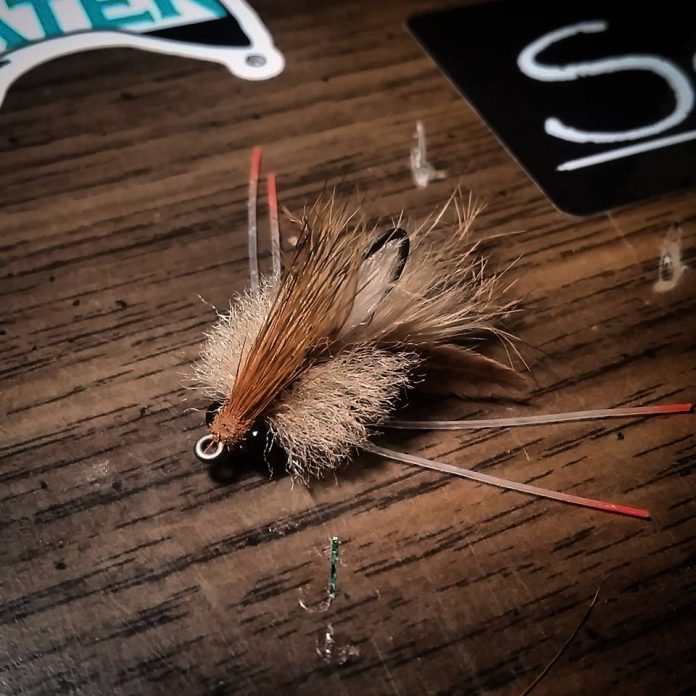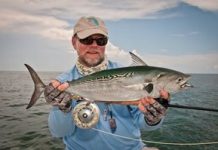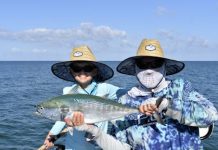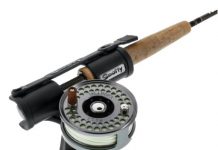
A Series by Capt. Jon Bull
In this installment in the series, Learning to Fly, we will be discussing the final piece of your terminal fly tackle before you tie on a fly and go fishing; your leader.
So you have bought the fly rod and reel of your dreams, loaded it up with hundreds of yards of backing, and bought fly line that shot through the guides with the greatest of ease. Now you need to put a fly on the end and go fish. To do that you must have a properly constructed leader, or tippet. The tippet is the monofilament or fluorocarbon section of line between your fly line and you fly. The fly line gets your fly to the fish; your tippet presents the fly to the fish. We are going to assume you bought a book of essential fly fishing knots and have mastered several of them. Now it is time to build your tippet.
There are two kinds of tippets; knotless tapered and knotted tapered. A knotless tippet is a store bought tippet that decreases in pound test as you get closer to the fly end of the tippet. For example, a 16 pound tippet will be that size at the end of the line where you tie on your fly, but will have 40 or 50 pound test up near the area that you connect your fly line to it. It decreases in size in order to turn the fly over in a more delicate manner. A knotted leader is usually home made, either from monofilament or fluorocarbon. We will use the example of 16 pound tippet again. Your butt section (closest to your fly line) will be the heaviest. I like 40 or 50 pound for a butt section. Then you start decreasing your line size. I handshake loop a short section of 30 pound, then 20 pound, then the final section of 16 pound. The lengths of these sections can vary, however, they should decrease in length as you go down. The knots you use to connect the different sections can vary from nail knots, double-uni knots, surgeons knots, bimini twists and spider hitches. Whichever knots work for you, stick with them. Confidence is half the battle when gearing up to go fishing.
Deciding how heavy or how light your tippet should be depends on the fish you are going for. Remember, the “tippet” is the last section of leader before your fly or shock tippet is tied on. The example of 16 or 20 pound tippet is frequently used for large tarpon fishing. A 60, 80, or 100 pound shock, or bite, tippet is tied on to the 16 or 20 pound tippet to combat the rough mouth of a large tarpon. For flats fishing, it is okay to scale down to 12, 10, or even 8 pound tippet. If you are fishing for snook, a shock tippet of 20, 25, or 30 pound will give you a better chance of not getting broke off. For redfish, trout, bonefish, black drum, or permit, shock tippets can be lighter or you can use no shock tippet at all. Much of that decision depends on how spooky the fish are, the water clarity, and the kind of fly you are using. If you are throwing a small crab pattern to bonefish in 6 inches of water, you would not want to have a heavy shock leader that the bonefish may see, when examining the fly, before he eats it. Light tippets give you an extra degree of stealth.
Leader length can vary, as well. The standard is a 9 foot leader; from fly line to fly. Again, many factors come into play. If the fish are spooky, the water is clear, and you are fishing in very shallow water, a long leader over 9 or 10 feet may be necessary. The further away your fly line is from the fly and the fish, the better your chances are that he will eat it. If you are fishing larger surface flies or fishing near docks or mangroves, shorter leaders (7 feet or less) will help your presentation immensely. A shorter leader will turn the larger fly over quickly and keep you from making so many false casts. Using clear fly lines will allow you to shorten your leaders up in any application.
When you are out on the water fly-fishing, you will get broke off and may need to build another leader. Ideally, you should have prepared several leaders the night before. However, sometimes we forget in all the excitement of getting ready. Carrying a “Tie-Fast” tool is a life-saver. This tool helps you tie nail knots rather quickly, so you can connect your sections of leader together. Obviously, a good set of line clippers and needle nose pliers are also essential.
In our next installment in the series, Learning to Fly, we will get down to the most enjoyable aspect of fly fishing; choosing an assortment of flies to fish with.

Capt. Jon Bull can be contacted via email at jbull1229@gmail.com, 863-860-7250, and on the many online forums under the handle “Shadowcast.”
- Learning to Fly 4 - February 5, 2016
- Learning to Fly 5 - July 24, 2013
- Learning to Fly 3 - July 24, 2013











